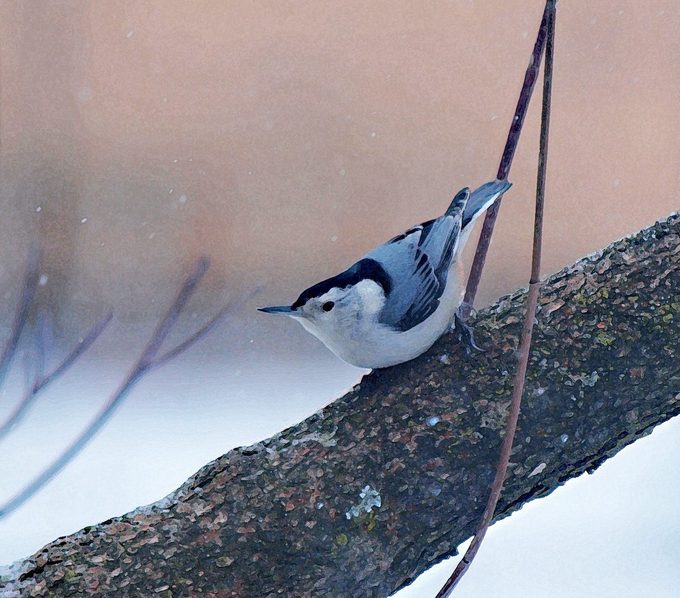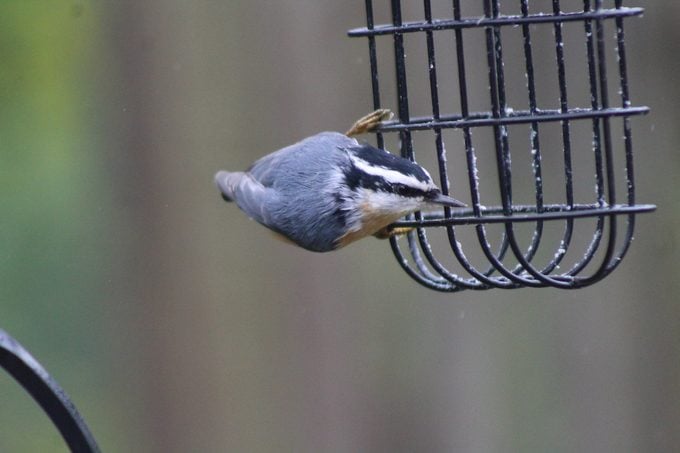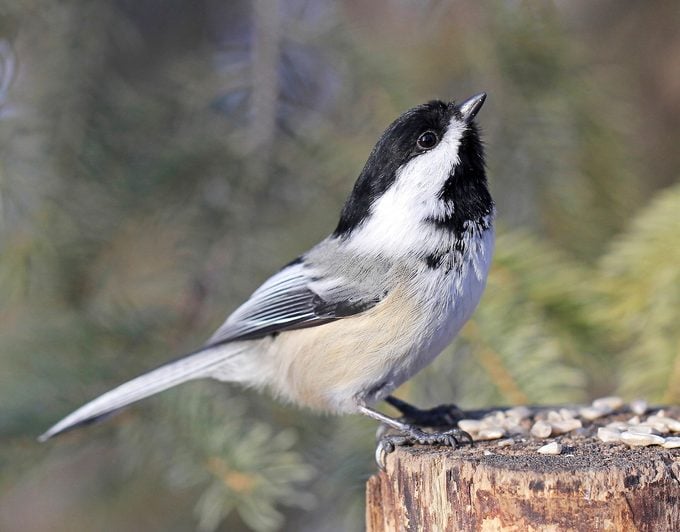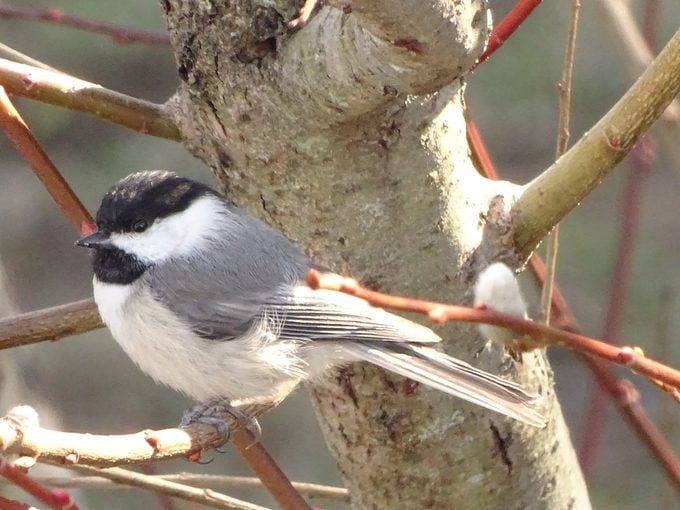Nuthatch vs Chickadee: How to Tell the Difference
Updated: Jan. 21, 2022
It's easier than you think to tell the difference between a nuthatch vs a chickadee. Find out what to look for when you spot these birds in your backyard.
Chickadees and nuthatches are active songbirds that are commonly spotted in backyard trees. They flutter about, looking for insects to eat, and also frequently visit bird feeders. These small birds also nest in tree cavities. But despite the similarities, there are easy ways to identify these birds. Here’s how to tell the difference between a nuthatch vs a chickadee.
Nuthatch vs Chickadee

Nuthatches often walk headfirst down tree trunks and cling to bird feeders upside down. They have shorter tails and longer bills than chickadees. Nuthatches often cache bugs, seeds and nuts away in small crevices to find and eat later. The white-breasted nuthatch is the most common, and is widespread in forests, parks and backyards across the United States. They do not migrate, so you can see them year-round across their range. This species has a black cap, like a chickadee, but with a white face and throat, and a blueish gray back. You may see brown or orange coloring on their lower belly.

Red breasted nuthatches do migrate, so look for them at your feeders in fall and winter. They spend the breeding season farther north. Look for a white eyebrow and a black eye stripe, as well as a light orange chest and belly.
Other nuthatches you should know are the brown headed nuthatch, which resides in the Deep South, and the pygmy nuthatch that is found in the western states.
How to tell the difference: downy vs hairy woodpeckers.

Black-capped chickadees have longer tails, a black cap and bib under their chin, and buff colored sides. These cute birds also have shorter bills than nuthatches. Listen for their distinctive “chick-a-dee-dee-dee” song. Carolina chickadees look very similar to their black-capped cousins and are very common birds across the southeastern states. The edge of their bib may appear neater.

In the west, look for mountain chickadees, which have a white eyebrow on their black caps, and the more colorful chestnut-backed chickadees. Boreal chickadees, which feature a brown cap and plain brown sides, are residents of the far northern forests. Psst—baby chickadees are utterly adorable.
Next, learn the difference between European robins vs American robins.




















